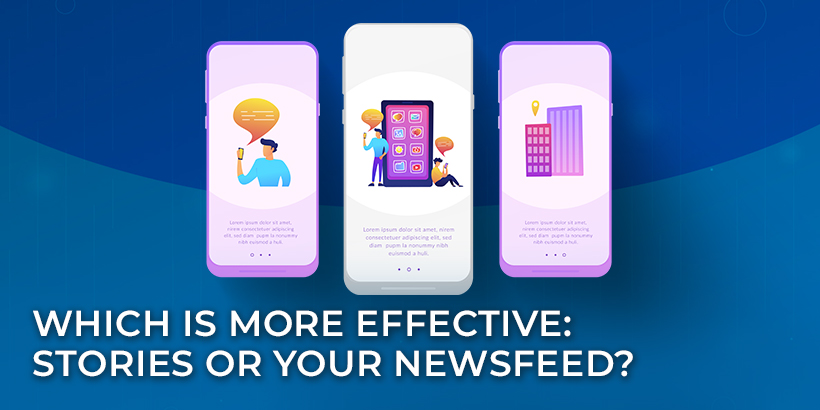
It’s not just you. Facebook’s newsfeed is becoming less effective for brands. It’s getting harder to reach your audience for free. At the same time, an alternative to the newsfeed is continuing to gain traction and see engagement: stories.
On Instagram and Facebook, stories are short posts that last for 24 hours (unless you choose to make them permanent). While they’re meant to be temporary, stories get prominent placement on your page and above people’s newsfeeds. This makes them effective for engaging your followers and even reaching new people.
Most brands can’t afford to spend a ton of time and energy creating social media content. So which is more effective: stories, or regular posts?
That depends on how you answer the following questions.
Who are you trying to reach?
Whoever your target audience is, they’re definitely on social media. But how they use social media depends on their demographics–more specifically, their age.
You’ll likely get some story engagement with every generation, but they’re going to be most effective with young Gen Xers, Millennials, and Gen Z. If you’re specifically trying to reach Boomers or older members of Gen X, you’re probably going to have more luck with the newsfeed.
A 2018 study found that older people responded better to standard posts, and younger audience members engaged more with stories.
What are you posting about?
Some topics and types of content lend themselves better to one medium than another. Since they’re so temporary, stories are generally more informal.
This can actually make them well suited for making quick announcements or creating content that solicits a response from your audience (like polls or surveys). Since people are used to seeing people in stories, and expectations are low for production value, this is also a great way to put some faces to your brand. You could share insights from experts within your organization (or even sales staff) to help your audience see your brand as a group of people. Time-sensitive announcements can make for effective stories, too.
Nothing is off-limits, necessarily, but you should think of stories as a different medium. And some ideas translate to that medium better than others.
What are you trying to accomplish?
Sometimes you just want a post or story to get attention. If lots of people see it, it’s a win. Other times you want to drive traffic to your website–to a lead magnet or another piece of content. Website visitors might be your key metric. Or maybe it’s conversions.
Some studies show that stories are more effective at driving traffic but less effective at driving conversions. Others have found that stories work better (or at least as well) regardless of your goal. Our own internal tests found that stories were more cost-effective at first, but they became less effective faster (after two weeks, posts were more effective).
When the results vary for other brands, that’s a strong signal that you can’t just take someone else’s word for it. You’ve got to test things for yourself.
Which does your audience respond to?
At the end of the day, every audience is a unique group of individual people. So what’s true of one audience may not be true of another. Your audience may use stories every day and prefer them over the newsfeed. Or they might not.
Maybe you’re trying to reach youth leaders, and since they’re trying to reach teens or college students, they use stories all the time. Or maybe they’re all older pastors, and stories just aren’t as likely to catch their attention.
Ultimately, it comes down to how well you know your audience and what you’re trying to accomplish through social media.
Maybe it’s time to put your assumptions to the test?